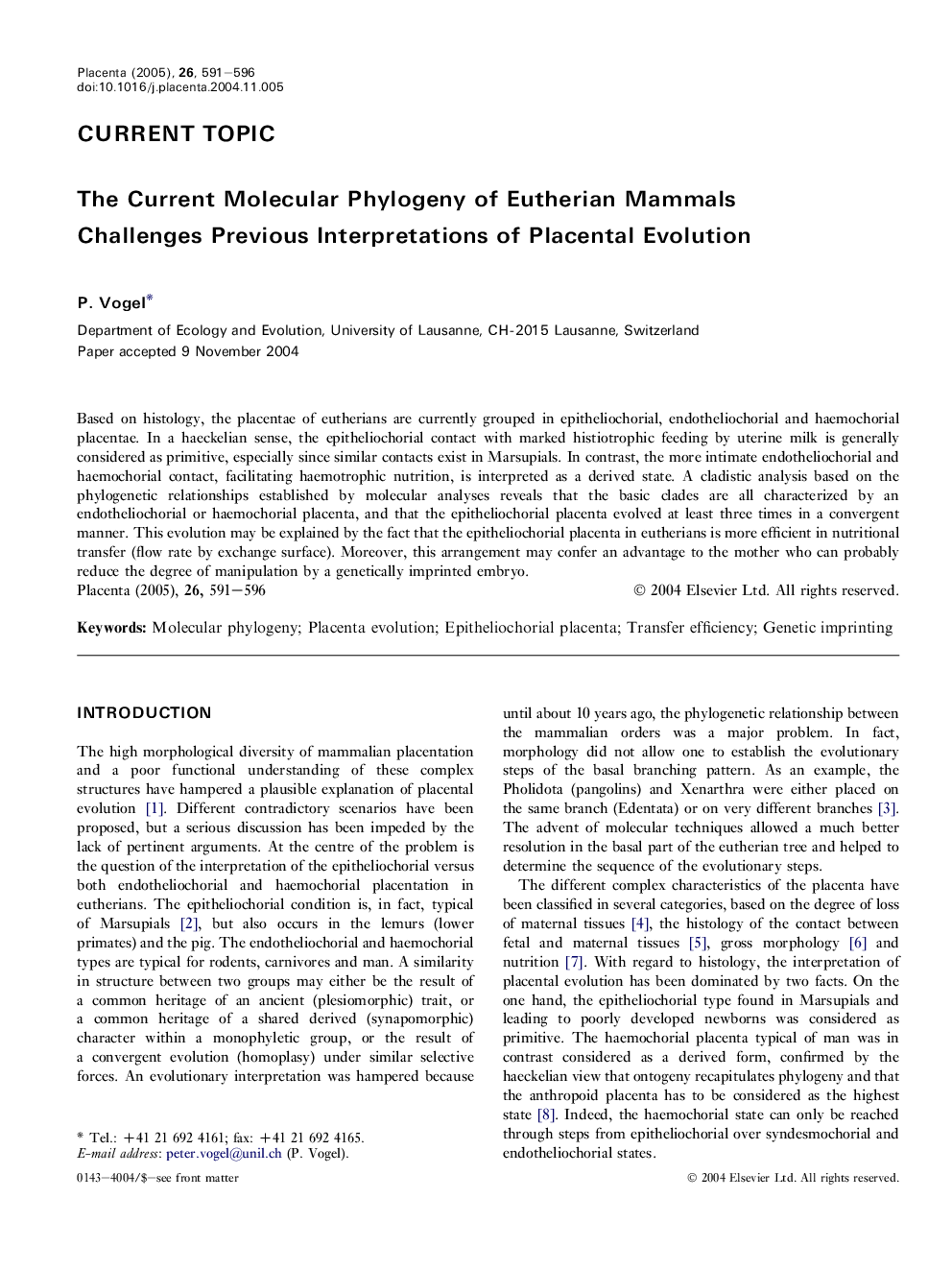| Article ID | Journal | Published Year | Pages | File Type |
|---|---|---|---|---|
| 9109157 | Placenta | 2005 | 6 Pages |
Abstract
Based on histology, the placentae of eutherians are currently grouped in epitheliochorial, endotheliochorial and haemochorial placentae. In a haeckelian sense, the epitheliochorial contact with marked histiotrophic feeding by uterine milk is generally considered as primitive, especially since similar contacts exist in Marsupials. In contrast, the more intimate endotheliochorial and haemochorial contact, facilitating haemotrophic nutrition, is interpreted as a derived state. A cladistic analysis based on the phylogenetic relationships established by molecular analyses reveals that the basic clades are all characterized by an endotheliochorial or haemochorial placenta, and that the epitheliochorial placenta evolved at least three times in a convergent manner. This evolution may be explained by the fact that the epitheliochorial placenta in eutherians is more efficient in nutritional transfer (flow rate by exchange surface). Moreover, this arrangement may confer an advantage to the mother who can probably reduce the degree of manipulation by a genetically imprinted embryo.
Related Topics
Life Sciences
Biochemistry, Genetics and Molecular Biology
Developmental Biology
Authors
P. Vogel,
